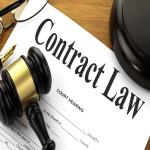A vehicle functions well when all the components work together as a unit. A glitch or an issue in any one of the parts can lead to damages and road hazards. Tyres need proper care and attention. From checking tread wear to maintaining the correct tyre pressure, all the tyre services are necessary. Tires should be healthy and well-maintained for them to deliver smooth drives. However, when these essential factors are ignored, they can cause several dangers to the vehicle and the passengers.
Therefore, you must look after the condition of your tires every once in a while. Tyre pressure might seem like a basic thing, which most people do not carefully look after. However, there are consequences that one can face if the tires are under-inflated or over-inflated. Tyre inflation can be a major reason behind your tire’s depleting life and bad performance. Your car’s manufacturer manual mentions the correct air pressure to be maintained. This is always according to the vehicle weight and load capacity of tires.
Under-inflated tires and their consequences
Tires having air pressure less than the required amount are considered to be under-inflated. They fail to resist the stress and strain that occur after hitting potholes. Due to the limited air pressure, under-inflated tires become weak.
The biggest problem comes in terms of heat resistance. Under-inflated tires don’t have enough air to keep the tires strong. They lose their ability to withstand the heat build-up that increases as you drive. The rubber of such tyres online becomes weak and the tire eventually blows off.
Under-inflated tires fail to protect themselves from punctures and other damages. Even minor contact with a hard object causes severe damages and punctures. This also affects your car’s performance. Tires with less air pressure affect the vehicle’s stability and handling. Your rides become rough and noisy.
Also read about: 5 Tips to Build Your SEO with Pinterest
Vehicles running on under-inflated tires require more force and pressure on your part to move. This means that your fuel economy takes a hit and you spend more time on the fuel station. Under-inflated tires burn more fuel and this means more maintenance costs.
Overinflated tires and their consequences
Over-inflation means tires being filled with air pressure that’s more than the required limit. This gives the tire a deformed shape. Due to the irregular shape, the stability of your drives is impacted. Your drives no longer feel smooth and easy.
These tires also wear irregularly, especially on the outer edges. This means you will have to replace the current tire set way before their retiring age. Over-inflated tires give irregular drives. The vehicle doesn’t stay straight and balanced. You face difficulty in staying straight on the road.
Over-inflated tires will also attain damages easily. Driving with these tires for a long time can lead to irreparable damages or expensive repairs. Both the conditions can be excessively dangerous for you as these damages also affect your safety.
How to maintain tire inflation
It is advised to inspect the tires at least once a week. This keeps you updated with the tire inflation and the overall condition of your tires. Both over as well as under-inflated tires affect your vehicle performance, tire performance, and tire life. To save yourself from buying a new tire set much earlier and to avoid risks, you should pay heed to the tire pressure. You should check the owner’s manual for more instructions and load capacity.
This ensures that you are maintaining your tires well. Tires that undergo timely services often last long and perform efficiently. Studies have revealed that most road accidents and hazards occur due to tire failure or other damages related to tires. Most of the tire issues happen because of under and over-inflated tires. Proper tyre maintenance, especially tyre pressure, is recommended for better security.
Takeaway
Now that you are aware of the different consequences one can face if the air pressure is below or above the recommended limit, make sure you reach out to the nearest gas station and get the appropriate air pressure in the tires of your vehicle.
















